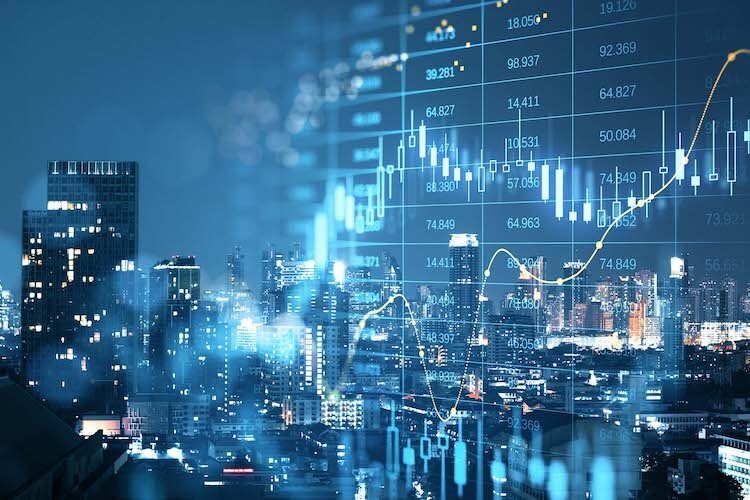
The long-term ROI opportunities with businesses that mine natural resources. By Burns Singh Tennent-Bhohi
The iconic pop song ‘Don’t you want me baby?’ by the Human League quickly became a ritualistic chant by one of my Co-Directors when raising fresh capital for our mineral development ventures. The melody and tone are of notable ambiguity in the knowledge that our industry is devoid of capital allocation, volatile in sentiment and pricing of assets, and small relative to our impact, resulting in investment capital for mineral development and mining being reserved for the few and the brave.
The world has been mining material for over 20,000 years with more advanced techniques and applications being more prevalent in developed civilizations within the last 7,000 to 10,000 years. Yet in 2024, ‘innovation’ and ‘disruption’ feel like compliments reserved for the investment institutions allocating capital to anything but the mineral development and mining industry.
Between April 1975 and April 1976, two of the most influential and important companies in the world today were formed: Microsoft & Apple. Iconic companies with visionaries at the helm, that today command combined market valuations approaching $6 trillion US dollars. The estimate for the United Kingdom’s GDP in 2023 stands at, $3.168 trillion US dollars. This new era of innovation has contributed to prosperity, opportunity, and a globalized capitalist community of willing participants.

In 2022 the Private Equity sector amassed an estimated $675 billion (USD) in investment capital for the tech sector. The market valuation of the top ten mining companies globally contingent on closing market prices is in aggregate, ~$761 billion (USD). This is to say that the investment industry believes that investment capital equivalent to almost the entire value of the top ten mining companies in the world should be allocated into the technology sector as of 2022.
At the turn of the 20th Century global production of copper (Cu) stood at less than 500,000 tonnes per annum, nickel (Ni) less than 5,000 tonnes per annum and gold (Au) 366 tonnes per annum. In 1976 global copper production stood at circa 5,000,000 tonnes per annum, nickel production c. 710,000 tonnes per annum and gold c. 1,391 tonnes per annum. In 2023, global copper production was 22.3 million tonnes, nickel production c. 3.4 million tonnes and gold production c. 3,650 tonnes.
These statistics serve as a reminder of the 20,000 years of unrivalled ‘disruption’ and ‘innovation’ in establishing the industries’ rightful role in being the unsung hero to all technological innovations and to caution the alarming rate at which we are consuming metals. They also emphasize that industry demand shows no sign of the world reducing its metal dependency, on the contrary.
When I evaluate assets, I am often interested only in those that have not worked because my assessment leads me to believe that the assets’ relationship to failure is asymmetric. I look at opportunities in three chapters; what is its past, where is it now and where is it going? The mineral development and mining industry serves as one of the most disproportionately valued asset classes.
The global landscape is a fast-paced environment in which capital can move even faster, and I forecast three central themes that enhance the industries’ perceived ROI and finally restore a relative balance when considering an assets capex and sustaining costs:
- Deglobalization
- Energy & metal independence
- Energy transition
The ambitions to fulfil and implement these themes are inconsistent with some predicting 2030, others 2050 and the mineral development and mining industry saying, “show me the money.”
What has been considered by broad capital market participants and asset allocators as distaste for such conventionally cyclical assets must now be acknowledged, again, as an industry impervious to substitution by way of synthetic disruption and once again stepping in as the unsung hero to contribute to one of the most ambitious transitions in energy of the last 100 years.
The holistic sector will benefit in sentiment driven capital associated with higher underlying commodity prices driving fresh and perhaps unconventional sources of capital* entering the market to support these key themes. However, it will be the innovative and disruptive mineral explorers and developers that will generate the greatest ROI, as Tier One Mining operators through 20 years of asset rationalization and corporate demands to return shareholder capital, have led to an under-capitalized environment that has discouraged venture capital to support the discovery and development of new mineral deposits.
Given that the industry applies a 15 to 20 year rule from discovery to production of any one mineral deposit, and, that not only metal demand but also independent metal supply and the associated clean-energy it will support, is being requested for delivery within the next 25 years, I believe that the sector and its long-suffering participants will provide tremendous opportunities for the investment community with the thematic backdrop acting as an almost re-introduction to our industry.
Perhaps this year my co-Director’s chant will reflect the latter verse: “You know I don’t believe you when you say that you don’t need me.”
* Reference Bill Gates/Warren Buffet KoBold Metals
Burns Singh Tennent-Bhohi is the Founder, Chairman & Chief Executive Officer of the Glenpani Group, a global venture capital conglomerate headquartered in the heart of the City of London. The Group is focused on the evaluation and augmentation of several asset classes, including distressed asset opportunities, private transactions, investment origination, and asset management. Glenpani serves as cornerstone investor to its transactions, the introduction and syndication of capital raising activities. Glenpani maintains an extensive international network/team of corporate financiers, investment bankers, merchant banks, UHNWI’s, project financiers, asset banks, and professional technical advisors. Glenpani’s present mineral development focus is in Botswana, as co-founder of Eastport Ventures Inc., a dedicated mining house focused on developing advanced base and energy metals assets.